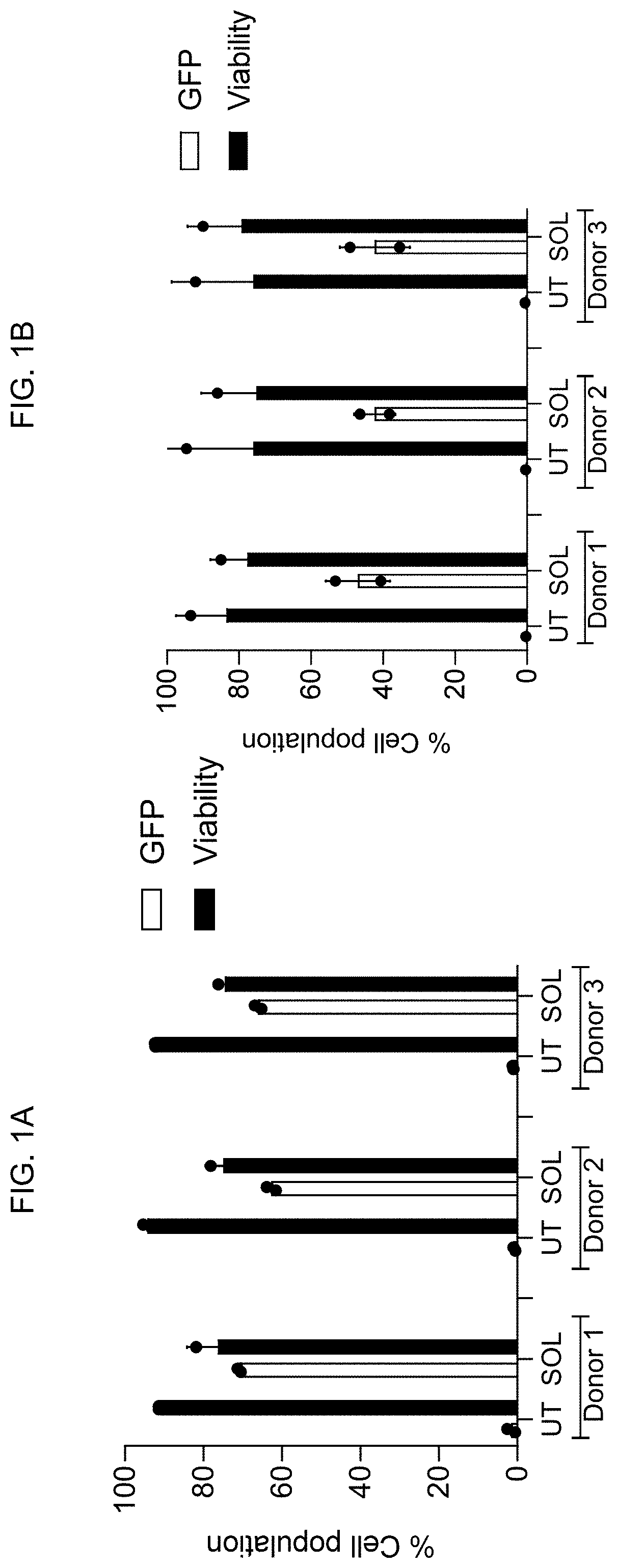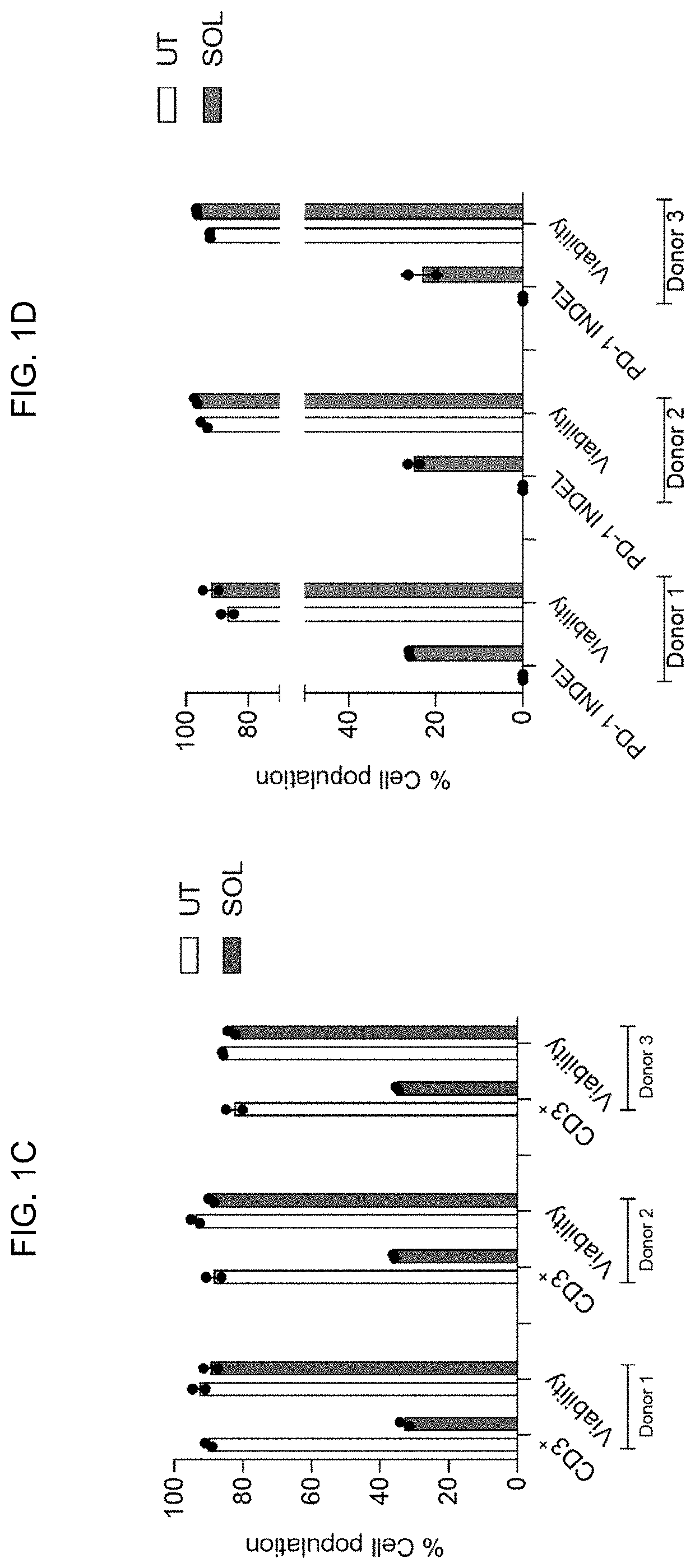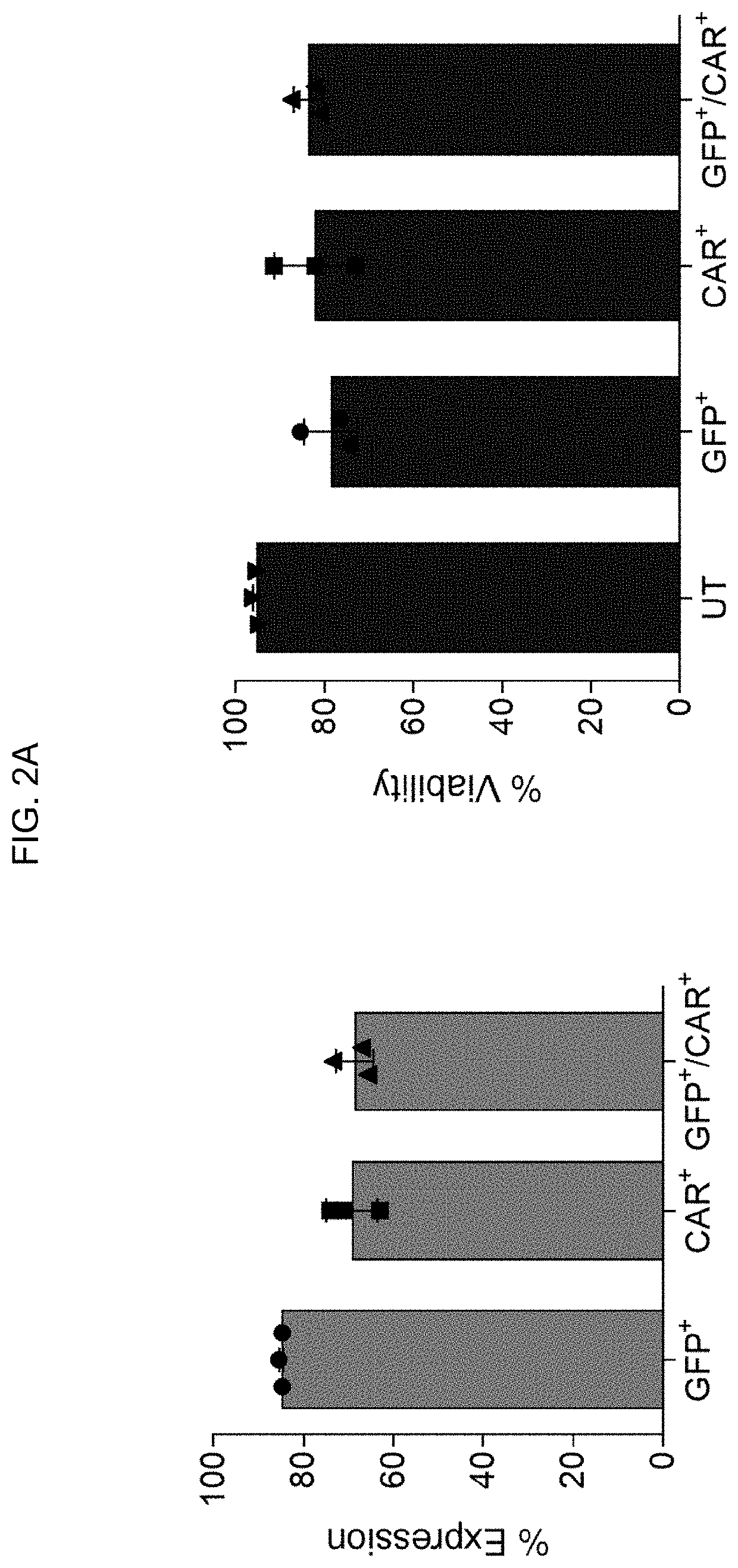Engineering of immune cells for ex vivo cell therapy applications
a technology of immune cells and ex vivo cells, applied in the direction of fusions for specific cell targeting, genetically modified cells, antibody medical ingredients, etc., can solve the problems of difficult conventional methods for transfection of suspension cells, e.g. non-adherent cells, etc., to facilitate cell engineering technologies, facilitate the delivery of cargoes, and high cell functionality
- Summary
- Abstract
- Description
- Claims
- Application Information
AI Technical Summary
Benefits of technology
Problems solved by technology
Method used
Image
Examples
example 1
and Versatile Engineering of Primary Human Immune Cells
[0198]The ability of the SOLUPORE™ delivery method to deliver a model cargo, GFP (green fluorescent protein) mRNA, to primary human T cells was evaluated. Because T cell therapy manufacturing processes are diverse and include a variety of cell culture regimes, both PBMC (Peripheral Blood Mononuclear Cells)-initiated- and CD3+ (cluster of differentiation 3) purified T cell cultures were used, each isolated from three human donors. GFP expression at 24 hr was 65-75% and 40-50% for PBMC-initiated- and CD3+ purified T cells respectively with cell viabilities greater than 70% (FIG. 1A and FIG. 1B).
[0199]Next the SOLUPORE™ delivery method efficiency was assessed with functional cargos using Cas9 (CRISPR-associated endonuclease Cas9 (Cas9)) protein-gRNA ribonucleoprotein (RNP) complexes designed to target the TRAC (T-cell receptor alpha) and PDCD1 (programmed death cell protein 1) genes. RNPs were delivered to T cells isolated from thr...
example 2
Sequential Delivery of Multiple Cargos
[0200]Next generation immune cell therapy products will require several modifications meaning that transfection technologies will be required to deliver multiple cargos. However, such engineering is only useful if cell health and functionality are not adversely impacted by the delivery method. Thus, the SOLUPORE™ delivery method was evaluated to deliver two cargos, either simultaneously or in sequence. The maintenance of the cell viability was also evaluated.
Dual Cargo Delivery
[0201]To test the concept of dual cargo delivery, CD19 (cluster of differentiation 19) CAR (chimeric antigen receptor) mRNA and GFP mRNA were delivered simultaneously to stimulated T cells from 3 donors by either by the SOLUPORE™ delivery method or electroporation. At 24 hr post-transfection, 68.7±4.1% of the population of cells using the SOLUPORE™ delivery method were both CD3 positive and CAR positive, and cell viability remained high (FIG. 2A). Representative flow cytom...
example 3
Release Demonstrated Minimal Cell Perturbation
[0205]The cargo delivery studies in Example 2 above demonstrated that transfection with the SOLUPORE™ delivery method is efficient while having a minimal effect on cell viability. However, it has been reported that delivery methods such as electroporation can minimally affect T cell viability yet can cause stress to cells that causes unintended changes to gene and protein expression and ultimately cell functionality. Thus, the effect of transfection on cytokine release and immune gene expression in T cells (Example 4) was evaluated.
[0206]It was first examined whether the SOLUPORE™ delivery method caused non-specific release of cytokines from T cells using a multiplex assay (Luminex). The panel contained 11 human analytes: IFN-γ (interferon gamma), IL-2 (interleukin 2), TNFα(tumor necrosis factor alpha), IL-8 (interleukin 8), GM-CSF (Granulocyte-macrophage colony-stimulating factor), IL-10 (interleukin 10), MIP-1α(macrophage inflammatory ...
PUM
| Property | Measurement | Unit |
|---|---|---|
| messenger ribonucleic acid | aaaaa | aaaaa |
| plasma | aaaaa | aaaaa |
| volume | aaaaa | aaaaa |
Abstract
Description
Claims
Application Information
 Login to View More
Login to View More - R&D
- Intellectual Property
- Life Sciences
- Materials
- Tech Scout
- Unparalleled Data Quality
- Higher Quality Content
- 60% Fewer Hallucinations
Browse by: Latest US Patents, China's latest patents, Technical Efficacy Thesaurus, Application Domain, Technology Topic, Popular Technical Reports.
© 2025 PatSnap. All rights reserved.Legal|Privacy policy|Modern Slavery Act Transparency Statement|Sitemap|About US| Contact US: help@patsnap.com



